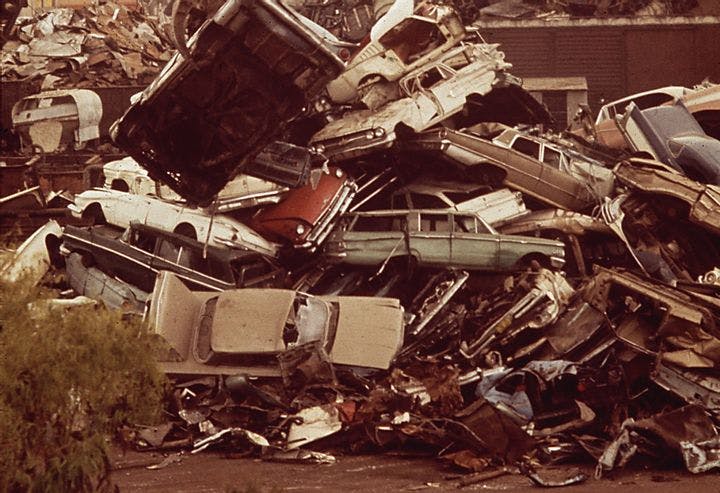Fall 2012
‘Cash for clunkers’ turned out to be a lemon
– The Wilson Quarterly
It didn't create new car sales; it sped up ones that would've happened anyway.
When the “cash for clunkers” program debuted as part of the Obama administration’s fiscal stimulus program in the summer of 2009, it inspired as much skepticism as glee. Some grumbled that the program wouldn’t help matters, while others saw economic and environmental sense in extending a credit of up to $4,500 toward the purchase of a new fuel-efficient vehicle to motorists who traded in old, pollution-spewing wheels. Economists Atif Mian of the University of California, Berkeley, and Amir Sufi of the University of Chicago argue that, in the end, the program did little to jump-start the economy.
One thing’s for sure, though: The credit got Americans to open their wallets. The program exhausted its $1 billion budget within a week, prompting Congress to approve another $2 billion for the program. Mian and Sufi calculate that an additional 370,000 vehicles were driven off the lot while the credit was available.
Just as skeptics warned, though, most sales “were borrowed from purchases that would have otherwise occurred in the very near future.” Mian and Sufi compared total car sales in areas with large numbers of clunkers to sales in areas with few clunkers in the year following the start of the program. While auto purchases in high-clunker areas were 40 percent higher than in low-clunker areas during the deal, they dropped off significantly in the months following the end of the tax credit. The rate of purchases in low-clunker areas inched up during the program, but barely. They did not suffer much of a decline after the program ended, however, topping sales in high-clunker areas for five months. Ten months after the program expired, the cumulative number of cars purchased in high-clunker areas was not significantly different than the number purchased in low-clunker areas.
Mian and Sufi also found that the auto tax credit had little impact on other economic outcomes. House prices, household defaults, and employment rates all continued to follow existing trends in both high- and low-clunker cities in the year after the program ended.
It’s important not to generalize, the authors say: Other forms of fiscal stimulus, such as unemployment benefits, may offer different benefits. But like its automotive namesake, the “cash for clunkers” program wasn’t a reliable vehicle for economic growth.
THE SOURCE: “The Effects of Fiscal Stimulus: Evidence From the 2009 Cash for Clunkers Program” by Atif Mian and Amir Sufi. The Quarterly Journal of Economics, August 2012.
Photo courtesy of Wikimedia Commons
